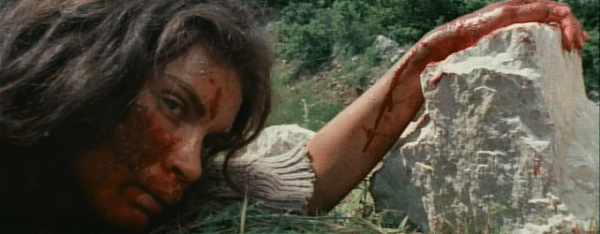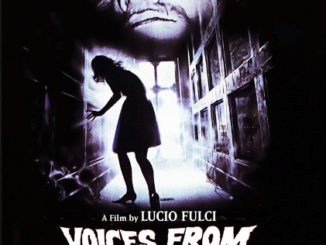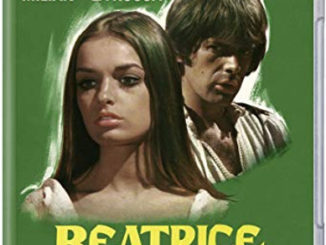Every now and again, a scene in a film will just totally get you, cause you to feel intense emotion of some kind. The first time I watched Don’t Torture A Duckling, around two decades ago, I was totally devastated by the scene I’m about to describe and which you can view below. I was extremely shocked and extremely upset to the point that I almost cried, yet was still, in a somewhat perverse way I suppose, thrilled because I was also watching superb cinema, a master class in how to make a scene as powerful and effective as possible. Don’t Torture A Duckling is a giallo from Lucio Fulci, the so-called Godfather Of Gore who ranks just below Mario Bava and Dario Argento in the Holy Trinity of Italian horror. He’s best known for his surreal, inventive and highly gruesome zombie chillers like Zombie Flesh Eaters and The Beyond, but he also made many strong movies, and in different genres, before he achieved world-wide notoriety with his soon-to-be Video Nasties, and some even with good scripts, performances and political commentary which really show an intelligent, diverse filmmaker with his own personal view of the world [though it’s a very nihilistic one]. The historical drama Beatrice Cenci and the wierd giallo A Lizard In A Woman’s Skin come immediately to mind, but Don’t Torture A Duckling, a film I reviewed early on for this website but like several of my early reviews don’t think I did the film justice, is for me the best of his pre-zombie films and actually deserves to be ranked up there with them.
It’s a subversive, devious and daring [the opening scene has a woman who will be the film’s heroine sexually tease a young boy!] rural giallo set in a town called Accendura which is rife with superstition and distrust of outsiders. Somebody is killing off the town’s young boys, and suspicion falls on Magiara, a hermit and a witch. Magiara confesses to the murders but only because she believes that her voodoo dolls and incantations have merely brought about the deaths of the three boys, and she professes to have no interest or awareness of the physical methods used. An alibi provided by a policeman sighting Magiara miles away from the latest murder scene clinchers her legal innocence and she is released the following day. However, the villagers are not convinced. As she walks through the town, women spit and windows are shut. Then she nears a graveyard in the nearly countryside. A man gets out of a car and switches on a pleasant, catchy pop number [actually from another film called Roma Bene]. Magiara opens the graveyard’s gate and enters, but as she closes it, the gate is suddenly slammed shut on her hand.
Three men corner her, clever editing making them appear suddenly like ghosts even when they are really close to Magiara, and not revealing their faces till the last possible moment, whereupon we get expert cutting from their faces to Magiara’s and back. Then they pull out some chains and proceed to whip her on various parts of her body. This being Fulci, the camera doesn’t flinch at the horrendous injuries inflicted and even moves in. Fulci, as usual, is forcing us to take a good look. Another song starts to play on the radio, a gorgeous romantic number sung with great passion. It’s called Quei Giorni Insieme A Te sung by Ornella Vanoni but written by the composer of the film’s fine score, Riz Ortalani. I don’t know what the words to the song are, but ironically placing it over the last moments of this horrifying and upsetting sequence has a devastating effect. Eventually the three men leave Magiara to crawl out of the cemetey and up a hill to a road, the camera sometimes adopting her point of view before looking out from the road, the first sight of Magiara being her bloodied hand as she tries to haul her body up and flag down a car. None of the folk in the passing vehicles seem to notice her. The last car she sees by the side of the road before she dies is full of young children, and the last sound she hears is their talking and playing, entirely appropriate considering the film’s subject matter. What a shattering scene, a masterpiece of staging, editing, music and effects all coming together to make up what I believe to me the finest scene in Fulci’s filmography as well as a savage indictment of how fear and ignorance can go so wrong.
This is not an easy scene to watch. It may be the nastiest ‘Death Of The Month’ we’ve so far had on Horror Cult Films, being not only very brutal but also very intense, so be warned before you watch! The video is in Italian with no subtitles, but after the opening bit of dialogue it hardly matters.
https://youtu.be/LjdKdsdi__Q






Be the first to comment